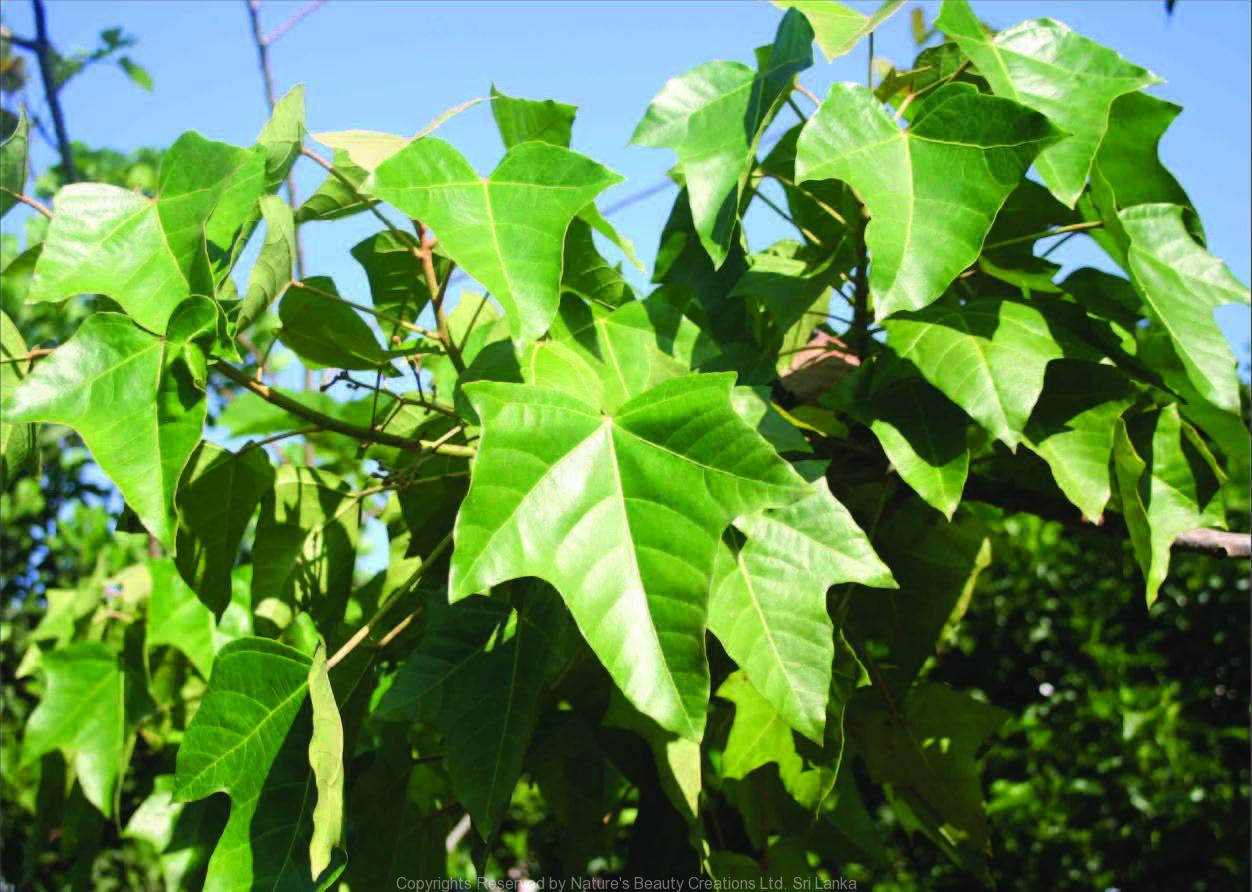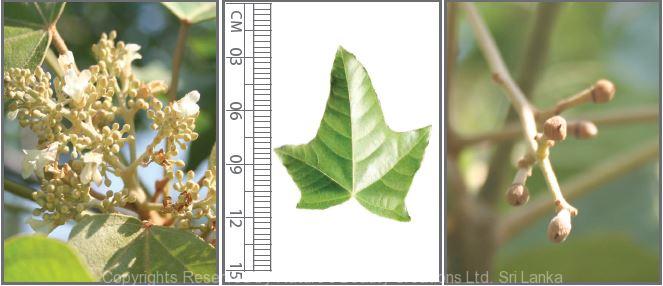

Traditional Knowledge
Useful plant parts :
Seed
Uses in traditional medicine :
- Small doses of seed oil is taken as a purgative
Scientific Research
Chemical constituents:
Coumarinolignoid: moluccanin from stem chips; podocarpane type trinorditerpenenes from twigs and leaves; n-hentriacontane, stigmasterol, β-sitosterol and campesterol from leaves; triterpene: acetyl aleuritolic acid, α and β-amyrin from bark; methoxycoumarin derivatives, β-sitostenone and phorbol diester from heartwood
Bioactivity :
Methanol extract of leaves: anti-inflammatory, antipyretic, hypolipidaemic; topical herbal preparation from dried plant extract: anti-inflammatory, analgaesic, wound healing
Clinical:
Note :
Seed oil is used as a fuel for lamp lightning
References : Cesca, T. G. et al., (2012), Antinociceptive, anti-inflammatory and wound healing features in animal models treated with a semisolid herbal medicine based on Aleurites moluccana L. Willd. Euforbiaceae standardized leaf extract: semisolid herbal, J Ethnopharmacol, 143(1), 355-62. Liu, H. Y. et al., (2007), Four New Podocarpane-Type Trinorditerpenes from Aleurites moluccana, Helvetica Chimica Acta, 90, 2017-2023. Niazi, J. et al., (2010), Anti-inflammatory and antipyretic activity of Aleuritis moluccana leaves, Asian Journal of Pharmaceutical and Clinical Research, 3(1), 35-37. Pedrosa, R. C. et al., (2002), Hypolipidaemic activity of methanol extract of Aleurites moluccana, Phytother Res, 16(8), 765-8. Prabowo, W. C. et al., (2013), Isolation and characterization of 3-acetyl aleuritolic acid and scopoletin from stem bark of Aleurites moluccana (L.) Willd, International journal of pharmacy and pharmaceutical sciences, 5(3), 851-853. Quintao, N. L. et al., (2012), Aleurites moluccana and its main active ingredient, the flavonoid 2’’-O-rhamnosylswertisin, have promising antinociceptive effects in experimental models of hypersensitivity in mice, Pharmacol Biochem Behav, 102(2), 302-11. Satyanarayana, P. et al., (2001), A new phorbol diester from Aleurites moluccana, Fitoterapia, 72(3), 304-306. Shamsuddin, T. et al, (1988), Moluccanin, a coumarinolignoid from Aleurites moluccana, Phytochemistry, 27(6), 1908-1909. Silva, C. M. et al., (1998), Preliminary phytochemical and pharmacologi- cal studies of Aleurites moluccana leaves [L.] Willd, Phytomedicine, 5(2), 109-113.
Copyrights Reserved By
Natures Beauty Creations




